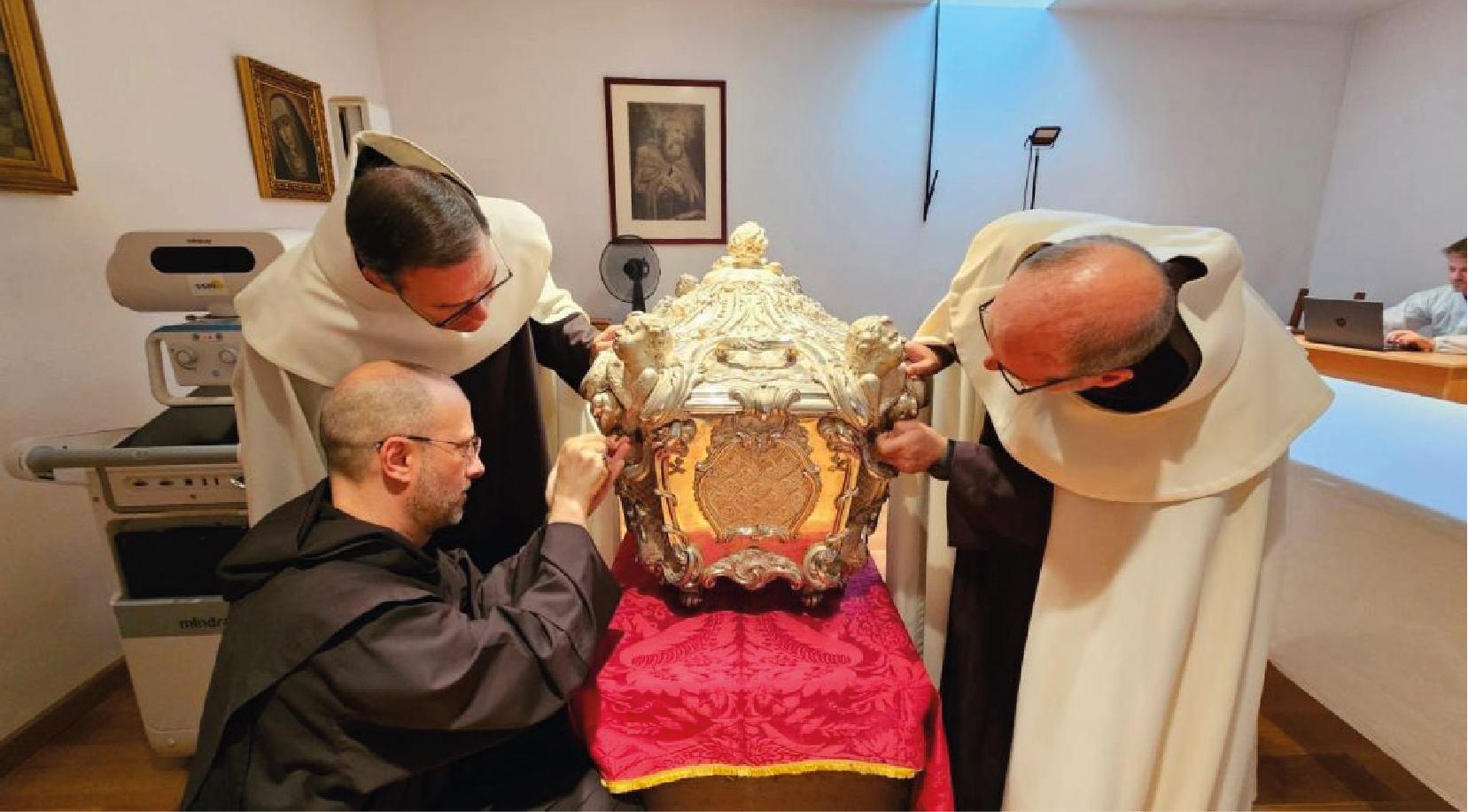(ZENIT News / Ávila, Spain, 08.29.2024).- In a significant event for the Catholic Church and devotees of Santa Teresa of Ávila, the tomb of the revered saint was opened on August 28, revealing that her body remains in the same state of preservation as it was during the last inspection in 1914. This revelation, made by Father Marco Chiesa, the Postulator General of the Discalced Carmelites, marks another chapter in the ongoing veneration of a saint whose physical remains have defied the natural process of decay since her death in 1582.
The process of opening the tomb was conducted with great care and reverence by the Carmelite community. At dawn, the Discalced Carmelite nuns, together with Father Chiesa, members of the ecclesiastical tribunal, and a select group of religious figures, began the solemn task of transferring the relics to a specially prepared workspace within the monastery’s cloistered area. The atmosphere was one of deep emotion, as the group sang the Te Deum while moving the relics.
Accessing the silver urn that holds Santa Teresa’s body is a complex endeavor. The first step involved removing the marble slab covering the tomb. Then, in the presence of a medical team and members of the ecclesiastical tribunal, the intricately crafted silver coffin was opened. The coffin, a gift from King Ferdinand VI of Spain and his wife, Queen Barbara of Braganza, was noted for its «excellent» craftsmanship and «magnificent» state of preservation.
The study of Santa Teresa’s relics, including her heart, arm, and hand, is being conducted with the assistance of renowned silversmiths Ignacio Manzano Martín and Constantino Martín Jaén, who are participating at both the beginning and conclusion of the research. The process of accessing the relics involved using ten keys, a symbol of the relics’ sacred and secure status. Three keys are kept in Alba de Tormes, three are held by the Duke of Alba, three are maintained in Rome by the Father General of the Carmelites, and one key is held by the Spanish monarch. The keys are used to unlock the outer grille, the marble tomb, and finally, the silver urn.
Before beginning the examination, those present prayed before Santa Teresa’s incorrupt body, which remains remarkably well-preserved, just as it was reported in 1914. This initial observation reaffirms the extraordinary state of her remains, which continue to inspire awe among the faithful. Father Chiesa remarked on the spiritual significance of this examination, particularly in understanding the physical challenges Santa Teresa faced in her later years. Despite suffering from severe physical ailments, including calcified spurs in her feet that made walking nearly impossible, Santa Teresa persisted in her mission, traveling to Alba de Tormes where she eventually passed away.
Father Chiesa also noted that the images from 1914 were in black and white, making direct comparisons difficult. However, he emphasized that the exposed parts of the body, such as the face and feet, appear consistent with how they were over a century ago. While the skin is mummified and lacks natural color, the facial features remain discernible, offering a clear view of Santa Teresa’s visage.
As for the ongoing studies, Father Chiesa cautioned that it is too early to draw definitive conclusions. The research aims not only to uncover new insights into Santa Teresa’s life but also to develop recommendations for preserving her relics for future generations. «We anticipate that these studies will provide valuable information about Teresa, but the final conclusions will come in due time,» he said.
This meticulous and reverent examination of Santa Teresa’s remains underscores the enduring legacy of one of the Church’s most beloved saints, whose life and teachings continue to resonate deeply with the faithful worldwide.
Thank you for reading our content. If you would like to receive ZENIT’s daily e-mail news, you can subscribe for free through this link.














